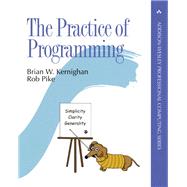With the same insight and authority that made their book The Unix Programming Environment a classic, Brian Kernighan and Rob Pike have written The Practice of Programming to help make individual programmers more effective and productive.
The practice of programming is more than just writing code. Programmers must also assess tradeoffs, choose among design alternatives, debug and test, improve performance, and maintain software written by themselves and others. At the same time, they must be concerned with issues like compatibility, robustness, and reliability, while meeting specifications.
The Practice of Programming covers all these topics, and more. This book is full of practical advice and real-world examples in C, C++, Java, and a variety of special-purpose languages. It includes chapters on:
- debugging: finding bugs quickly and methodically
- testing: guaranteeing that software works correctly and reliably
- performance: making programs faster and more compact
- portability: ensuring that programs run everywhere without change
- design: balancing goals and constraints to decide which algorithms and data structures are best
- interfaces: using abstraction and information hiding to control the interactions between components
- style: writing code that works well and is a pleasure to read
- notation: choosing languages and tools that let the machine do more of the work
Kernighan and Pike have distilled years of experience writing programs, teaching, and working with other programmers to create this book. Anyone who writes software will profit from the principles and guidance in The Practice of Programming.








